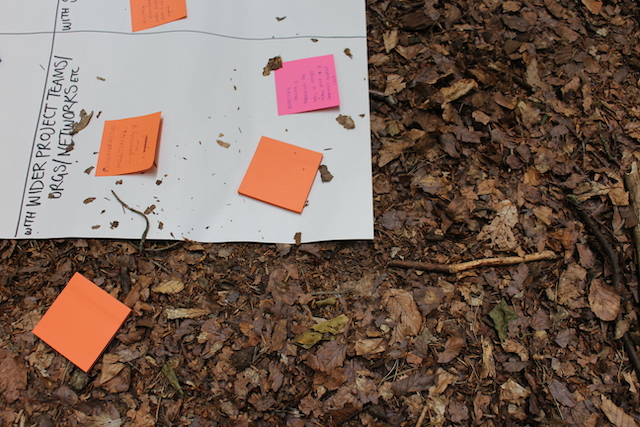We are looking forward to welcoming our second cohort on the Regenerative Design Lab to Hazel Hill Wood for their spring residential visit.
The Regenerative Design Lab programme works with the seasons. We held interviews in the winter (when it was actually snowing) and are meeting in the spring where first shoots of ideas will emerge. Over the summer we will turn these ideas into experiments. And and we will harvest and share the fruits of these experiments in the autumn.
In this find out about what we do on our residential retreats and how it fits into the Lab programme.
What’s in store for the Spring Residential
- Arriving at the wood and then properly arriving: really taking the time to notice what it is like to be surrounded by so much thriving life in a forest.
- Making face-to-face connection. So far our participants have met online, in a group and through individual daisy-chain conversations.
- Introducing theory. We use Donella Meadows’s 12 Levers of Systems Change as a core piece of supporting theory in the Lab. We use it to map a path between the economic goals of our current system and the goal of regenerative design.
- We train our participants in coaching skills to support peer-to-peer learning.
- In the woods we will spend some time connecting with the living world. The wood is a venue, a template for living systems and a facilitator of conversations.
- We will eat good food to nourish our conversations and reflections.
- Introducing more theory. We use Bill Sharpe’s Three Horizons Model to structure future thinking. In this session we introduce the idea that regenerative design is a horizon three goal. More on this to follow.
- We will gather and present to each other our reflections from the last four weeks. And we will start to define our personal enquiries for the Lab.
What happens next?
The Spring Residential marks the transition from thinking about and observing the present to imagining the future. Over the next three months we will use our living systems model to help us define what a regenerative built-environment sector could look like. From there we will back-calculate to the present and ask what do we need to do now to build that future.
How can I find out more?
Sign up to Oliver’s mailing list via this form and we will keep you up to date with news from the Lab and when applications for our next programme begin.

